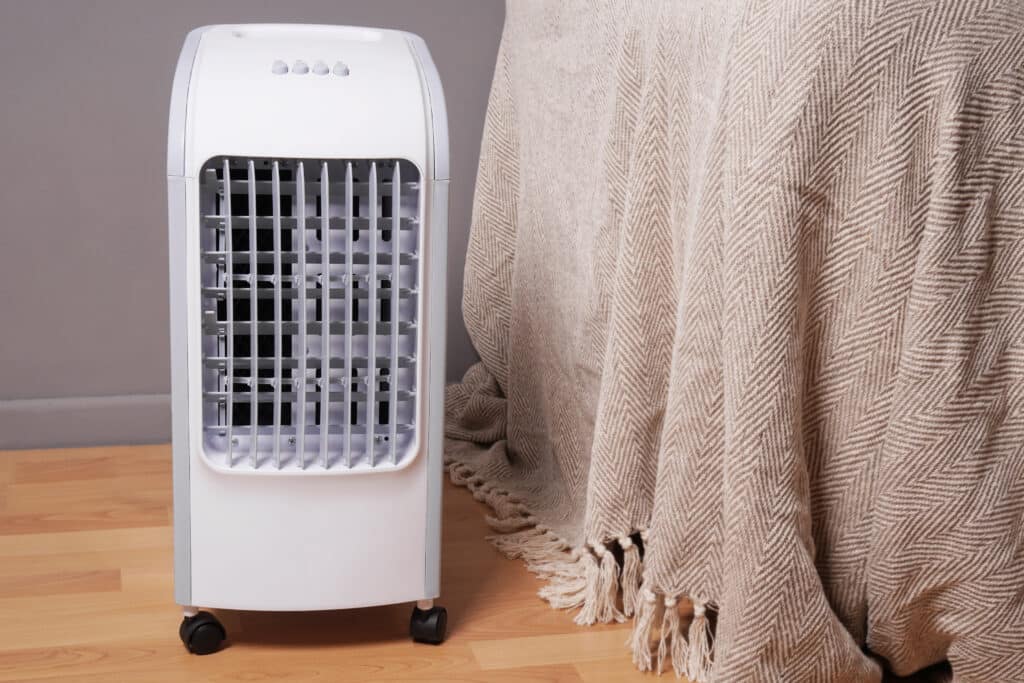How Much Electricity Does a Portable AC Use?
Portable air conditioners (ACs) have become a popular choice for cooling smaller spaces or supplementing central air conditioning systems. However, concerns about energy consumption and electricity costs often arise. Let’s delve into the details of how much electricity a portable AC unit uses and factors that influence its energy efficiency.
Understanding Portable AC Energy Consumption
Portable AC units provide a convenient way to cool specific areas without the need for complex installations. The electricity consumption of a portable AC depends on several key factors:

1. Cooling Capacity
The cooling capacity of a portable AC, measured in British Thermal Units (BTUs), determines its efficiency in cooling a space. Higher BTU ratings indicate more cooling power, but also potentially higher energy consumption. It’s important to choose a unit with an appropriate BTU rating for your room size to balance cooling efficiency and energy usage.
2. Energy Efficiency Ratio (EER)
The Energy Efficiency Ratio represents the cooling output of an AC unit divided by its energy consumption in watts. AC units with higher EER values are more energy-efficient. Look for models with a higher EER to ensure that you’re getting the most cooling per unit of electricity consumed.
3. Usage Patterns
How often and how long you run your portable AC greatly affects its energy consumption. If you frequently run the AC and keep it on for extended periods, your electricity usage will be higher compared to occasional usage. Using programmable timers or setting temperature limits can help optimize usage patterns.
Calculating Portable AC Electricity Usage
Calculating the electricity usage of a portable AC involves a simple formula:
Electricity Usage (in kWh) = Power Consumption (in kW) × Operating Hours
The power consumption of the AC can usually be found on its label or in the user manual. For example, if your portable AC is rated at 1.5 kW and you run it for 8 hours a day, the daily electricity usage would be 12 kWh.

Energy-Saving Tips for Portable ACs
While portable ACs offer convenience, there are strategies to minimize their energy consumption: For breakdowns for air conditioner units read here.
1. Proper Unit Sizing
Choose a portable AC with an appropriate BTU rating for your room size. An oversized unit will cycle on and off frequently, consuming more energy, while an undersized unit will run continuously, also increasing energy usage.
2. Seal and Insulate
Ensure that windows and doors are properly sealed and insulated. This prevents warm air from entering and cold air from escaping, reducing the strain on your portable AC to maintain the desired temperature.
3. Maintain Your AC
Regularly clean or replace filters and ensure that vents are unobstructed. A well-maintained AC operates more efficiently, using less energy to deliver optimal cooling.
4. Temperature Settings
Set your portable AC to a reasonable temperature. Each degree you lower the thermostat increases energy consumption. Consider using fans to help circulate cool air, allowing you to set the AC at a slightly higher temperature.
The Bottom Line
Portable ACs offer a flexible cooling solution, but their energy consumption varies based on factors like cooling capacity, EER, and usage patterns. By understanding these variables and implementing energy-saving practices, you can enjoy the comfort of a cooler space without significantly impacting your electricity bill.
Remember that while portable ACs provide immediate relief from the heat, exploring overall home cooling solutions such as improved insulation and central air conditioning upgrades could lead to more sustainable long-term energy savings.
Make informed choices when selecting a portable AC unit, considering both your cooling needs and the unit’s energy efficiency, to strike a balance between comfort and responsible energy use.


